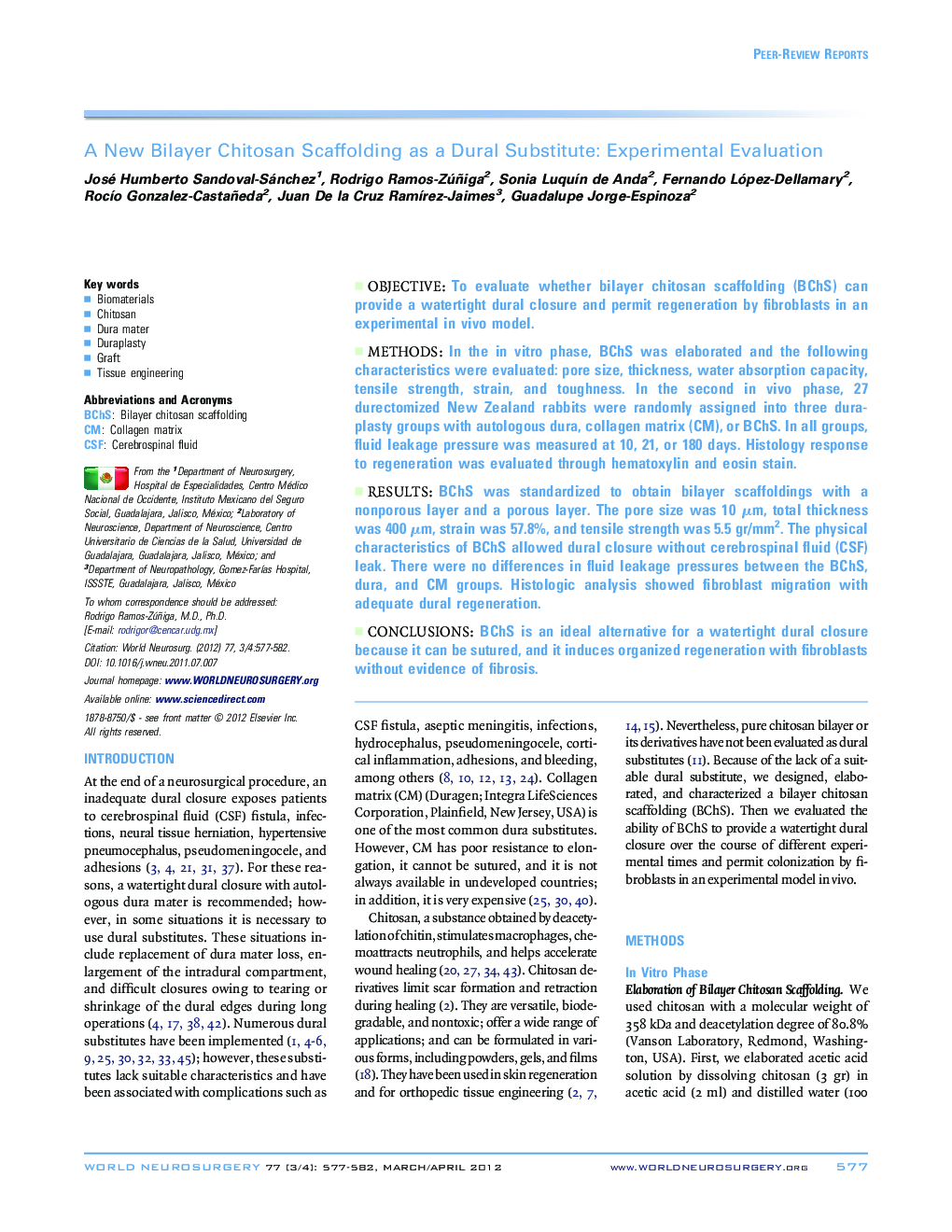| Article ID | Journal | Published Year | Pages | File Type |
|---|---|---|---|---|
| 3096910 | World Neurosurgery | 2012 | 6 Pages |
ObjectiveTo evaluate whether bilayer chitosan scaffolding (BChS) can provide a watertight dural closure and permit regeneration by fibroblasts in an experimental in vivo model.MethodsIn the in vitro phase, BChS was elaborated and the following characteristics were evaluated: pore size, thickness, water absorption capacity, tensile strength, strain, and toughness. In the second in vivo phase, 27 durectomized New Zealand rabbits were randomly assigned into three duraplasty groups with autologous dura, collagen matrix (CM), or BChS. In all groups, fluid leakage pressure was measured at 10, 21, or 180 days. Histology response to regeneration was evaluated through hematoxylin and eosin stain.ResultsBChS was standardized to obtain bilayer scaffoldings with a nonporous layer and a porous layer. The pore size was 10 μm, total thickness was 400 μm, strain was 57.8%, and tensile strength was 5.5 gr/mm2. The physical characteristics of BChS allowed dural closure without cerebrospinal fluid (CSF) leak. There were no differences in fluid leakage pressures between the BChS, dura, and CM groups. Histologic analysis showed fibroblast migration with adequate dural regeneration.ConclusionsBChS is an ideal alternative for a watertight dural closure because it can be sutured, and it induces organized regeneration with fibroblasts without evidence of fibrosis.
